 MONTGOMERY COUNTY PUBLIC SCHOOLS
MONTGOMERY COUNTY PUBLIC SCHOOLS
 MONTGOMERY COUNTY PUBLIC SCHOOLS
MONTGOMERY COUNTY PUBLIC SCHOOLS

To provide a safe playground environment, there must be adequate supervision, properly maintained play equipment and grounds, and appropriate activities. Principals, building administrators, teachers, and playground aides must have a thorough understanding of why playground injuries/accidents occur, be able to recognize hazards, and be knowledgeable about appropriate activities for the available school playground space.
Playground injuries/accidents have many causes and safety hazards, including but not limited to the following:
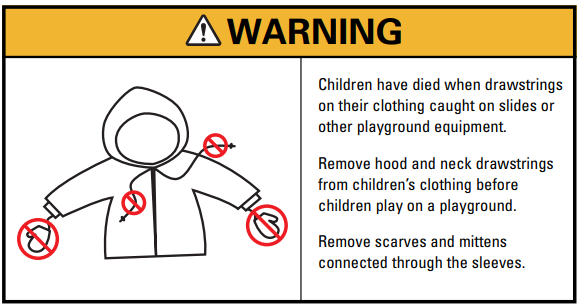
Playground aides must recognize the above-listed injury/accident causes and safety hazards and take action to correct them. Offering alternative activities or taking appropriate discipline measures are the most common solutions. Initiating high-interest activities that reduce inappropriate activities/behavior before they start are ideal.
Examples of possible problem situations or conditions are as follows:
School principals are responsible for developing a method of training playground aides in the techniques of safe playground management. This may be accomplished by cooperative faculty planning in conjunction with the school physical education teacher. Any employee who will supervise recess and playgrounds should complete the online safety course, Playground Supervision, which can be accessed in SafeSchools. Playground supervision guidelines are provided below, and they should be shared with elementary school playground aides, teachers, and building services staff at the beginning of each school year.
Playgrounds and play equipment should be inspected daily for excessive wear, damage, and other potential safety hazards. The Daily Play Equipment Inspection Form (below) should be completed prior to use each day. It is important to ensure that there is sufficient engineered wood fiber to provide a safe surface for the play equipment. There should be 12 inches (fresh, uncompacted) or 8 inches (compacted from use) of engineered wood fiber covering the playground area. If additional wood fiber is required or equipment damage is found, schools should contact their maintenance service center for assistance.
Examples of playground equipment and surfacing deficiencies:
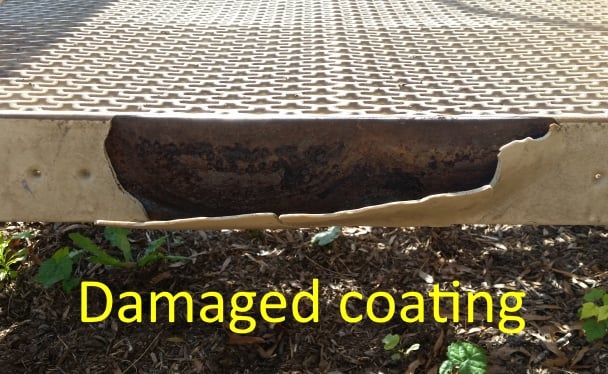
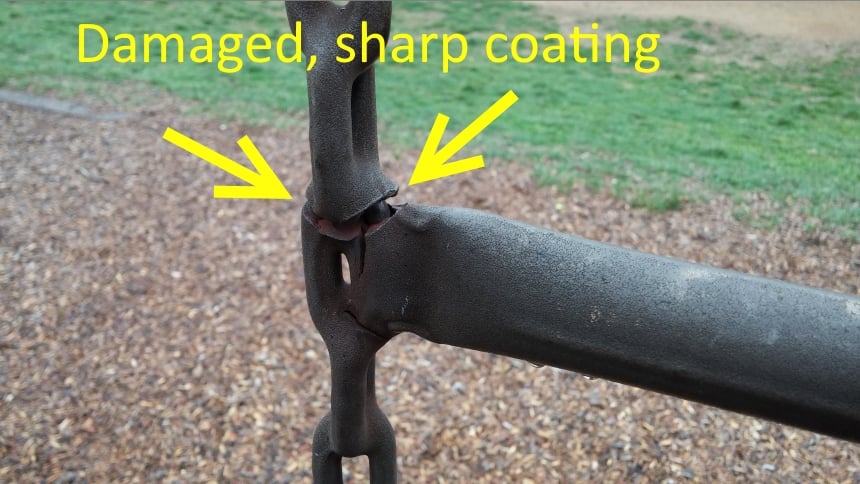
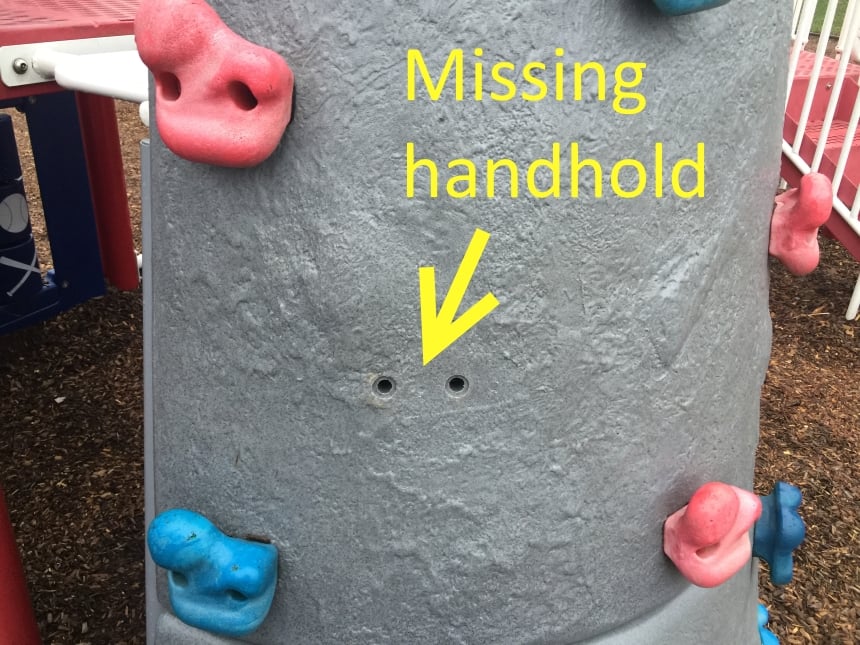

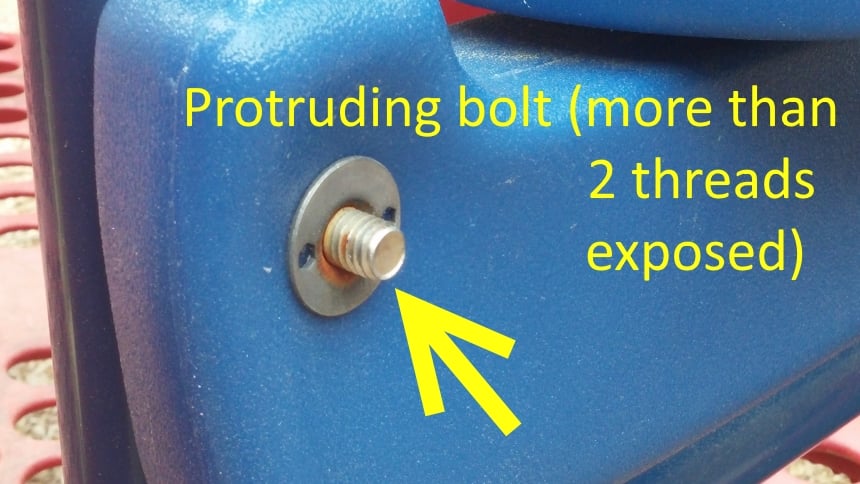
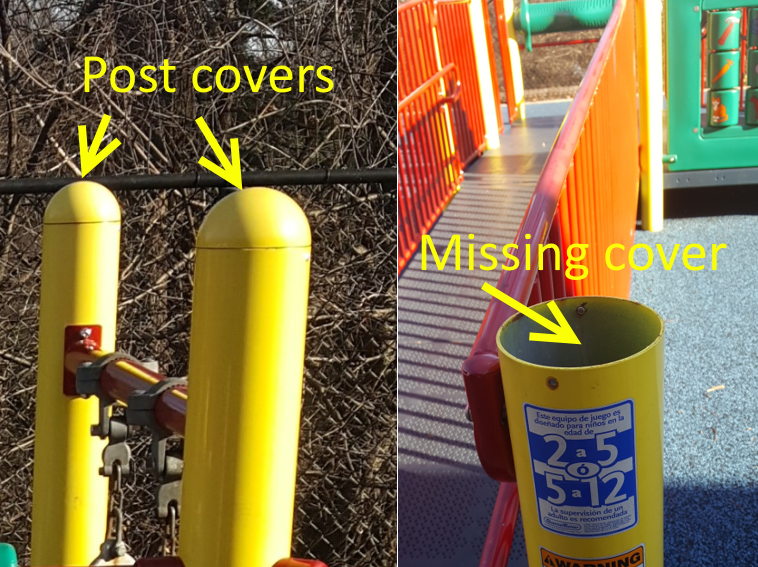
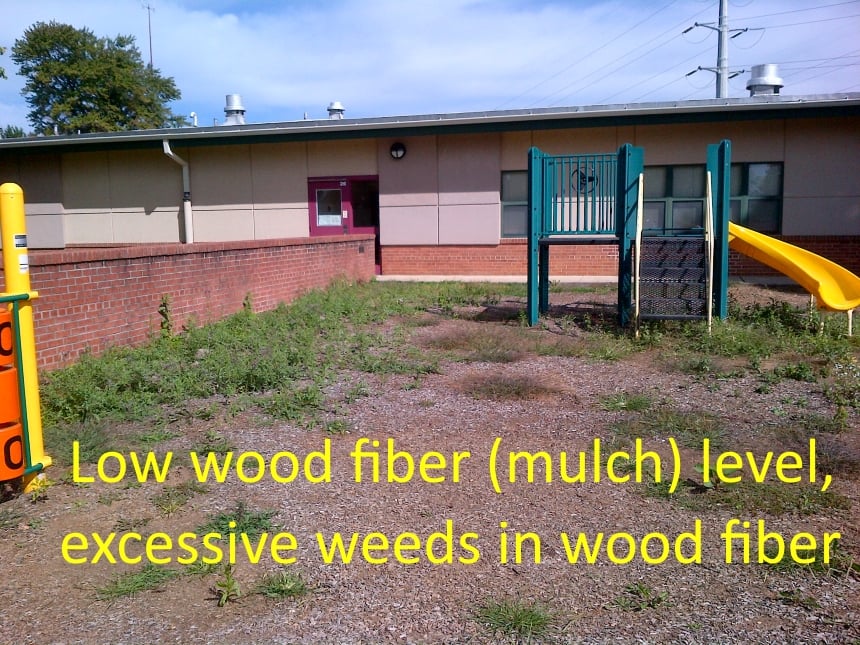
Schools interested in replacement of damaged playground equipment or installation of additional equipment, to better serve their students, should contact the Department of Planning and Construction. A list of playground equipment prohibited for installation at MCPS facilities, for safety and/or maintenance-related reasons, is linked below.
Before
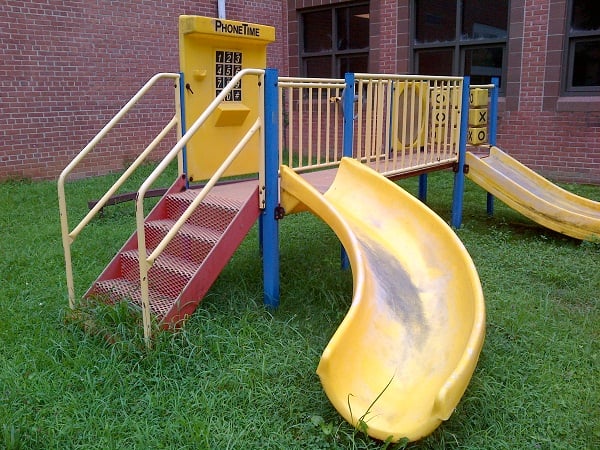

Schools should consider restricting or canceling outdoor recess during extreme or hazardous weather. Schools may use the information below in evaluating weather conditions for outdoor recess. In general, outdoor recess should be canceled when it is 20 degrees Fahrenheit or colder with a wind speed of 10 miles per hour or more (see red areas in the Wind-Chill Factor Chart below for hazardous combinations of temperature and wind speed). Outdoor time should be restricted to 15 to 30-minute increments with frequent hydration when the heat index exceeds 90 degrees Fahrenheit (84 degrees F with 70%+ humidity). Outdoor time should be avoided when the heat index exceeds 100 degrees Fahrenheit (see red areas in the second chart below - Heat Index Chart).
Local temperature, humidity, and wind speed can be found at the National Weather Service website.
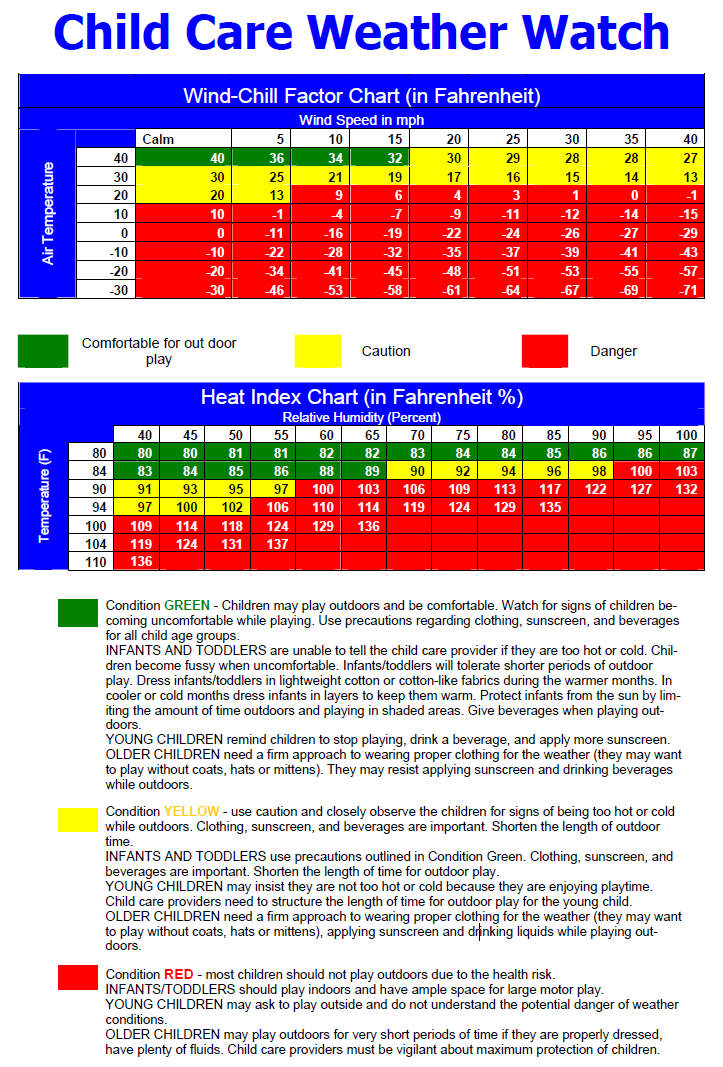
Charts and condition precautions provided courtesy of Champaign-Urbana Public Health District.